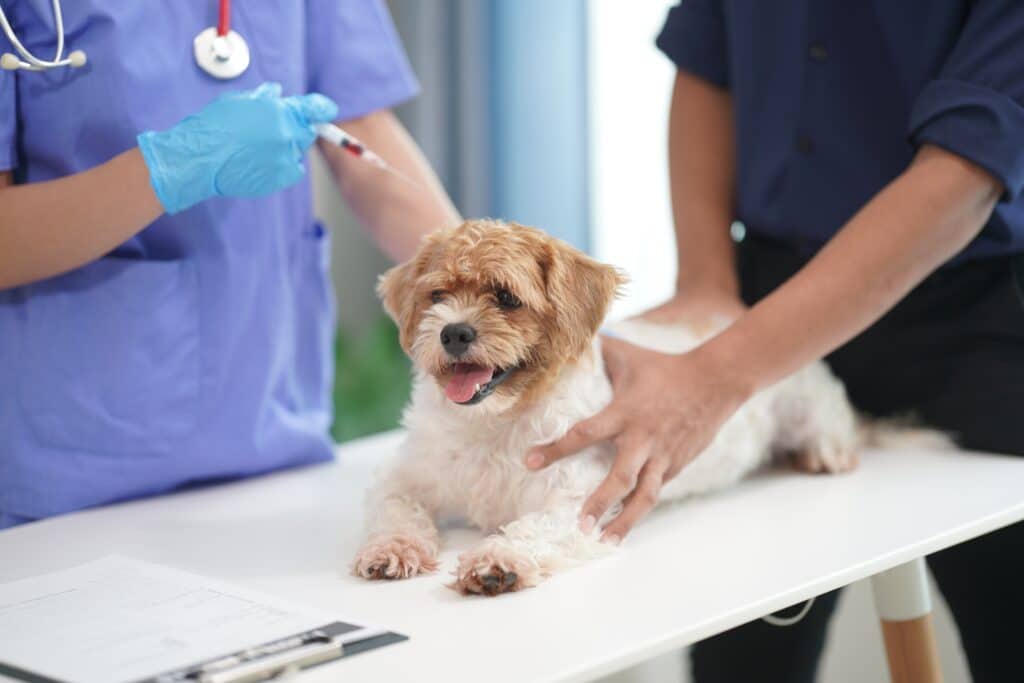Online Veterinary Assistant Training
Become a Veterinary Assistant
The number one job of a veterinary assistant is to support the veterinarian as well as veterinarian technicians with basic tasks. Veterinary assistants typically feed, weigh, bathe, and take the temperature of animals. They may also help give medication, clean cages, and help restrain animals during treatment or other medical procedures as needed.
Veterinary assistants take charge of making sure office visits and procedures go smoothly for animals under veterinary care. Our 100% online course will train you to become a veterinary assistant, so you can turn your love of animals into a rewarding career.
Fee: $2,495
Start anytime!

Job Outlook for Veterinary Assistant
According to the Bureau of Labor Statistics, the average salary of a veterinary assistant is currently just over $26,000 per year.
Jobs are expected to increase by 19% through 2026, which is considered much faster than average positions. There should be plenty of job opportunities for veterinary assistants regardless of location.
Veterinary Assistant FAQs
Do Veterinary Assistant handle administrative duties?
Some veterinary assistants perform clerical work such as scheduling appointments and speaking with customers. As a vet assistant, you may handle many of the logistical and operating duties, such as check-in, billing, and after-visit care. Duties will vary depending on the office you work in, but every task is to ensure the health and well-being of animals inside the veterinary practice.
What’s the difference between a Veterinary Assistant and Veterinary Technician?
Veterinary assistants are typically training through a certificate program to help with basic duties. Veterinary technicians, on the other hand, have a formal education and work as the nurse of a veterinarian. Veterinary technicians need two-year associate degrees accredited by the American Veterinary Medical Association (AVMA).
Can I go from a Veterinary Assistant to a Veterinary Technician?
Yes. If you pursue additional education and licensing, you could become a veterinary technician. Working as a vet assistant is a great first step to understanding the industry, different specialties, and advanced duties required to work as a vet technician.
Course Objectives
Anatomy and physiology of the major organ systems
Handling medical records and communicate with clients and coworkers
Restraining animals for procedures, take vital signs, and bathe them
Nutrition, vaccinations, and administering medication
Preparing prescriptions, taking blood samples, and radiographs
Curriculum
Physiology and Anatomy 1: Directional Signs and The Skeletal System
Physiology and Anatomy 2: The Nervous System, Endocrine System, and Muscles and Joints
Physiology and Anatomy 3: The Circulatory and Respiratory Systems
Physiology and Anatomy 4: The Digestive System, Urogenital System, Liver, and Spleen
Front Office Duties: Records, Confidentiality, and Client Relations
The Physical Examination: Procedures, Restraint, and Vital Signs
Workplace Hazards and Infection Control
The Reproductive Cycle and Sterilization Procedures
Nutrition Basics, Prescription Foods, and Prescriptions
Dentistry: Charting, Tooth Disease, and Dental Care
Parasites of the Gastrointestinal Tract and Heart
Surgery 1: Preparing The Patient
Surgery 2: Your Role During and After Understanding Animal Behavior
Student Testimonial
Through the Landscape & Garden Design Certificate, I was able to cultivate the skills and best techniques necessary to properly design and install my own landscape and hardscape concepts. Moreover, I acquired a much more expansive knowledge of local resources, including the instructor’s extensive proprietary plant selection list for our East Tennessee growing zones, which truly made my dream garden outstanding.
Mary Woody, Former Landscape and Design Certificate Student

Register Today
This course is 100% online. Start anytime.